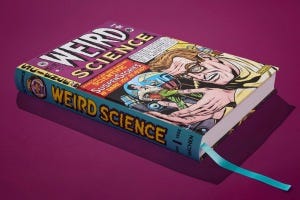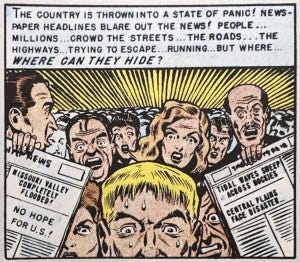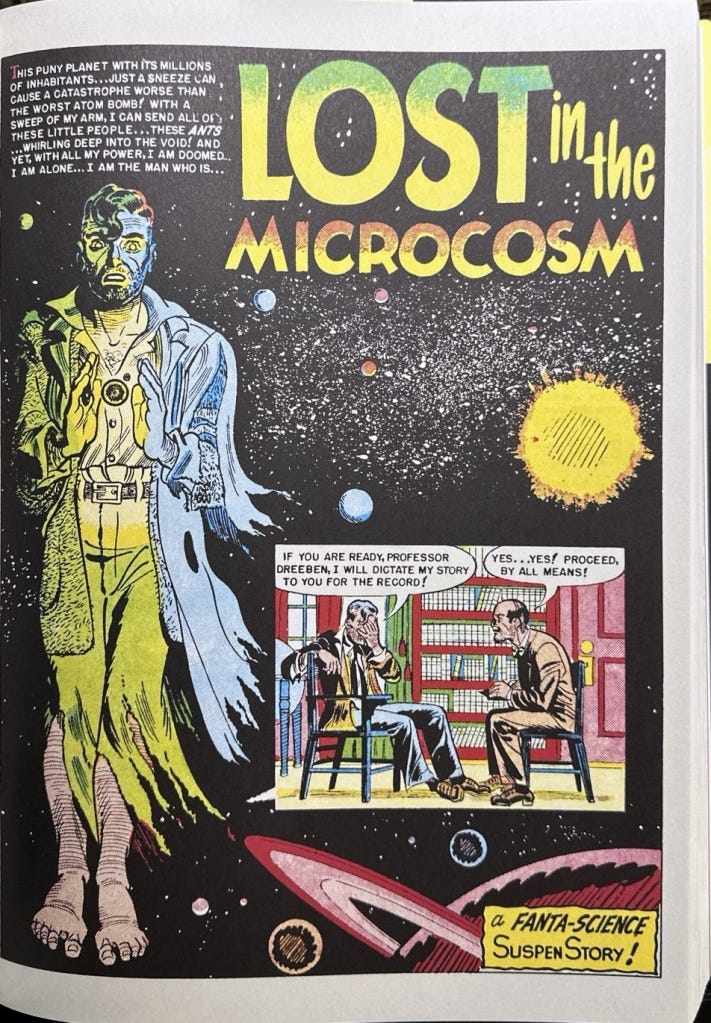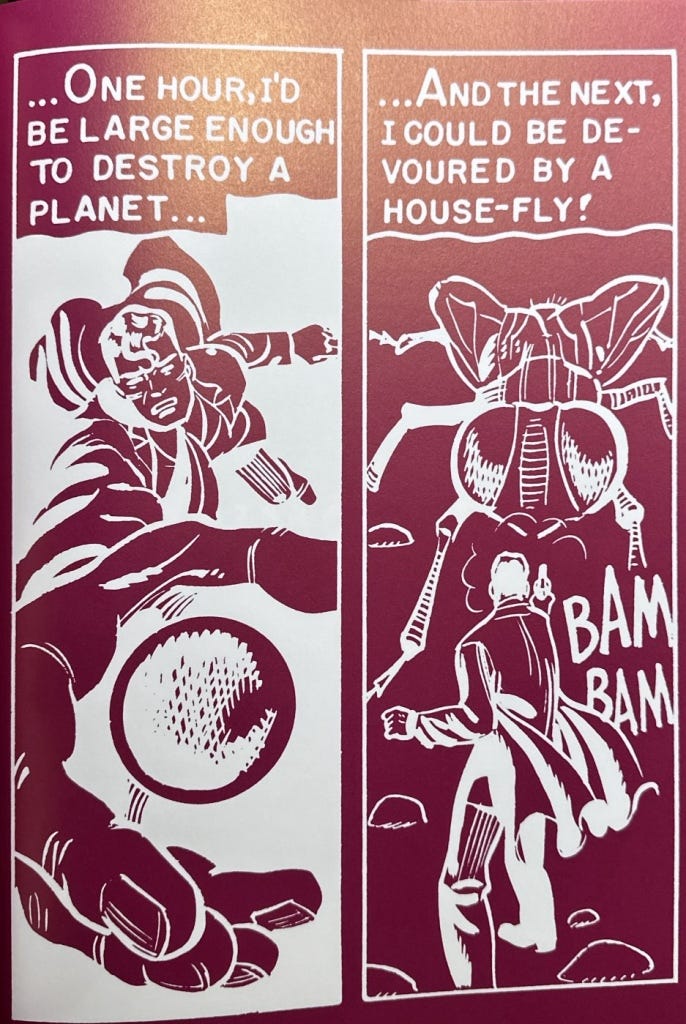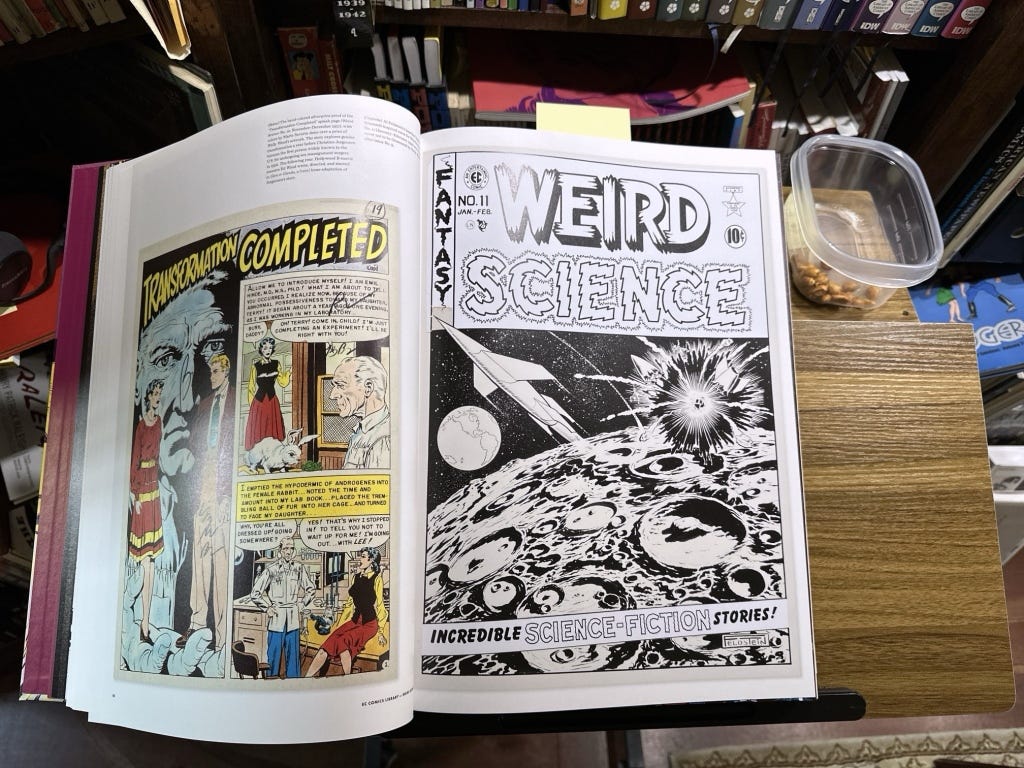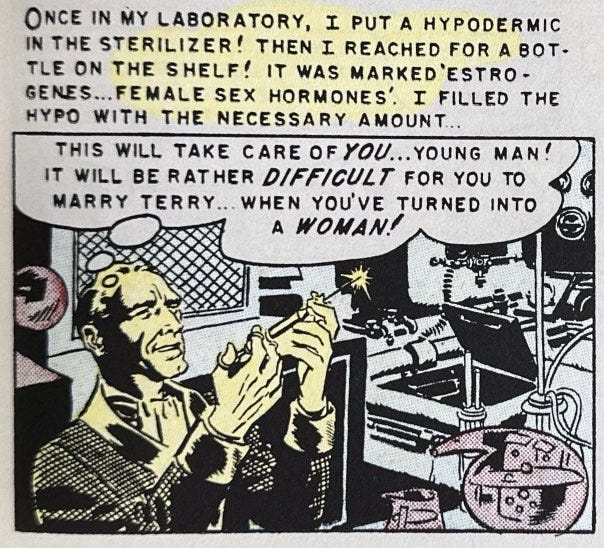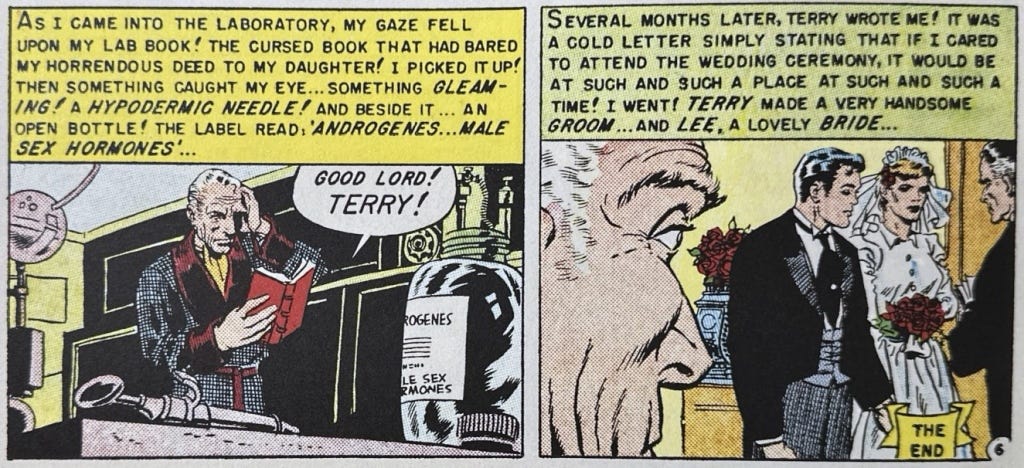EC Sci-Fi At Scale: Taschen’s XXL Weird Science
The EC science fiction titles hold a special place in American pop culture. The books that ran from 1950 to 1955 (Weird Science, Weird Fantasy, Weird Science-Fantasy) were indispensable waystations for the still-niche genre of science-based speculative fiction. I would argue they were the crucible in which pop sci-fi as we have known it was forged. These comics not only popularized some of the foundational tropes of the genre. But EC’s stable of premiere artists then visualized many of these themes in ways that were far more sophisticated than the typically awful B- and C-level production values Hollywood applied to the sci-fi genre. Even though these comics were among the least popular of the EC titles, they likely were legitimating sci-fi in more young readers’ minds than any pulp mag or film c-lister could. And at the same time, artists like Wally Wood, Al Feldstein, Joe Orlando, Harvey Kurtzman and Jack Kamen were inventing a visual language for sci-fi themes: post-apocalyptic vistas, space travel, the romance of a starship launch, bug-eyed and fish-faced aliens. Their influence on the subsequent conceits of sci-fi fiction, art and film, as well as their look, is undeniable. From Forbidden Planet (1956) to 2001: A Space Odyssey (1968), Star Trek (1966), Star Wars (1977) and beyond, these comics were the first rough sketches of what our fantasies of the future would become.
And so Taschen’s EC Comics Library. Weird Science. Vol. 1 ($200) deserves attention beyond the usual EC fans and comic book collector-completists. This is the first in a planned series of EC reprints in the publisher’s signature XXL (11”x15.6”) scale. It is a blown up, meticulously produced enhancement of that seminal comics experience of the early 1950s. EC expert Grant Geissman provides helpful introductory context that will be familiar to fans. Publisher William Gaines and his newly minted artist/editor Al Feldstein drew heavily from Gaines’ love of the sci-fi pulps of the 30s and 40s. In fact he mined liberally a memory of those mags to create story “springboards” that Feldstein then fleshed out into scripts and storyboards that they would assign to suitable artists. And the artists visualized these themes in compelling ways that were different even from the Flash Gordon and Buck Rogers visions from the 30s strips: Wood’s techno-porn; Feldstein’s pristine A-bomb bursts, saucers and cataclysms; Kamen’s lighter tone; Kurtzman’s parodic send-ups of an otherwise humorless genre.
But the meat of the book is the first 11 issues of Weird Science reproduced at massive scale. When rendered this large, the art swims in a reader’s head. As usual Taschen has made deft choices. We get the off-white and grainy page texture of an old comic, even its halftones and muted colors. But these images retain the sharp line edges and detail that feels more like original art reproductions. The book is admirable in taking the best of both reproduction approaches for a unique encounter with the art. If you want inky blacks and vibrant hues, there are always the recent Dark Horse EC reprints. The Taschen designers aspire to a subtler experience that feeds both nostalgia and art lovers.
This volume reprints the first 11 issues as well as contemporary photos of the artists, original art and full index and credits for the issues as well as bios of all concerned. It weights in at 462 pages and nearly 8 pounds. Here at the Panels & Prose library we have almost all of the previous reprints of EC comics since the early 1970s (Chelsea House), 80s (Russ Cochran), the B&W Fantagraphics surveys of individual artists, the IDW Artists Editions and the Dark Horse recolored versions of late. Do we need an XXL edition at $200 a pop? This librarian plans to be chaste and satisfy himself with one or two samples.
Beyond price, I have my quibbles. It is beyond my understanding why Taschen designers devote so many intermediary pages on negative renderings of great panel art. They add nothing to my understanding of the work, whereas the original art and extreme blow-ups of Wood’s obsessive detailing are revealing.
Also, it seems to me we need to kick our understanding and appreciation of EC up a notch. These EC origin stories have been told many times already in countless places. It is high time a world class publisher like Taschen took this work more seriously as genuine aesthetic/cultural/historical touchstones. Alexander Braun’s introductory work on Taschen’s Krazy Kat and Little Nemo behemoths is the kind of critically astute lens this work deserves at this point. For instance, Mssrs. Feldstein and Gaines were remarkable conduits of post-war cultural sensibilities. Brooklyn born and Jewish, they were steeped both in the first wave of modern mass media as well as the 40s and 50 cultural soup of New York. Both men were early devotees of psychotherapy, a fact that is never explored by critics of the EC comics’ approach to character. They were literate men who played with high ideas in a popular medium. Geissman calls out especially a proto-transgender tale from Weird Science 10, “Transformation Complete.” Feldman and Gaines conceived and Wally Wood executed the story of an aging biologist experimenting with hormonal gender reassignment treatments. Fearful of losing his daughter to a handsome suitor he moves his testing from from mice to a certain man. Mayhem and the signature EC twist ending ensue. While far from a prescient tale about gender fluidity, it is a good example of how the EC sci-fi books exposed a wide, often young, audience to one of the most powerful aspects of the niche speculative fiction. Sci-fi was an important safe space where Americans were allowed to reimagine normal at a time when normality was a national religion.
These comics lived in the shadow of the most destructive war in history, a kneejerk “return to normality” and social conformity, the prosect of nuclear annihilation and one of the most fertile moments in American literature and art. These are the biographical and cultural contexts we need to layer onto our understanding of great popular art. These comic books remain in print and resonate 70 years after they were published. Can we say that of circa 1950 anything? Sitcoms? B-movies? Potboiler paperbacks? Don’t get me wrong. Taschen’s EC Comics Library. Weird Science. Vol.1 is a wonderful book that I can’t recommend highly enough. That familiar history needs to be retold to new generations of readers, to be sure. But its mere presence so many decades later suggests a need for more.



